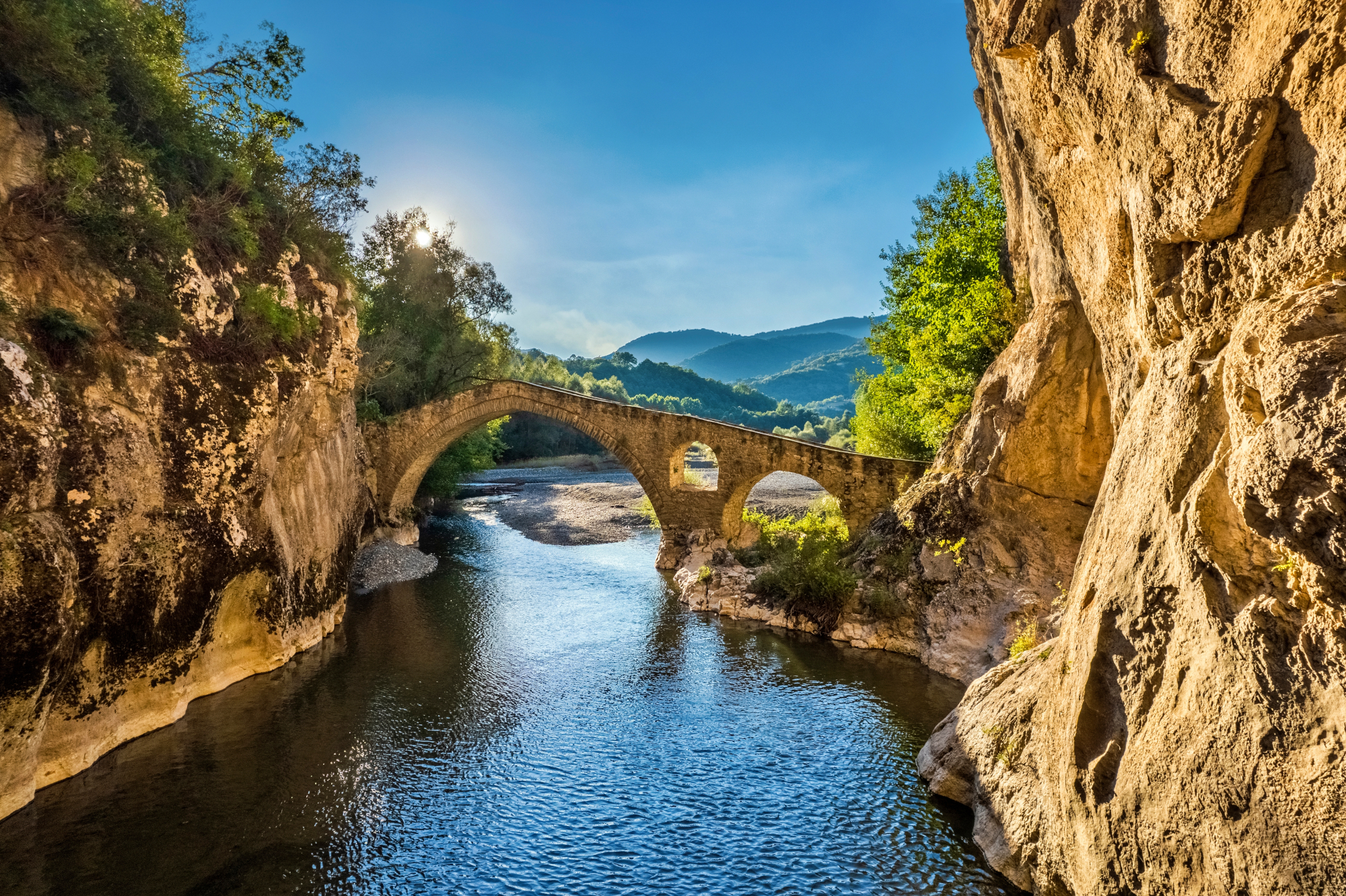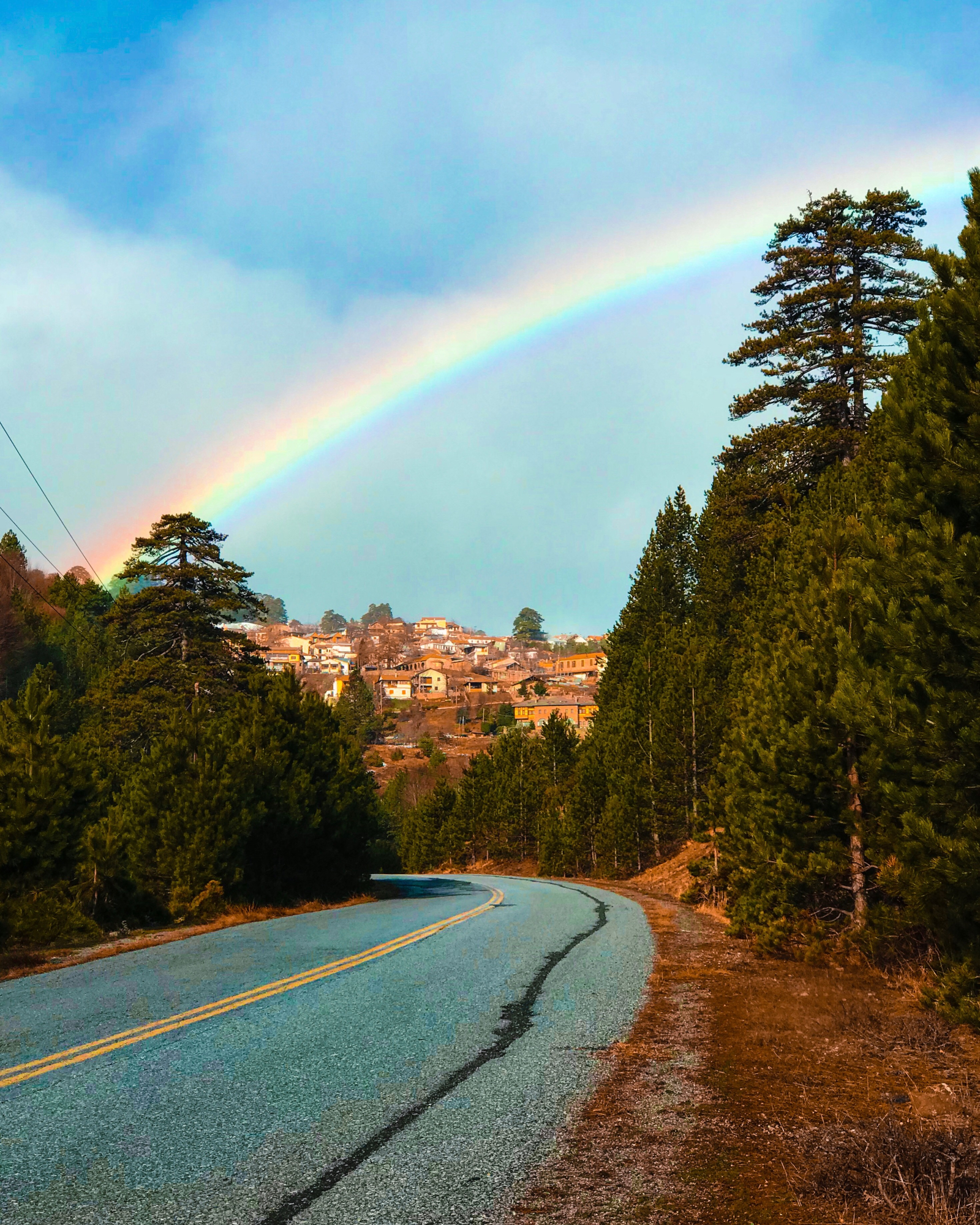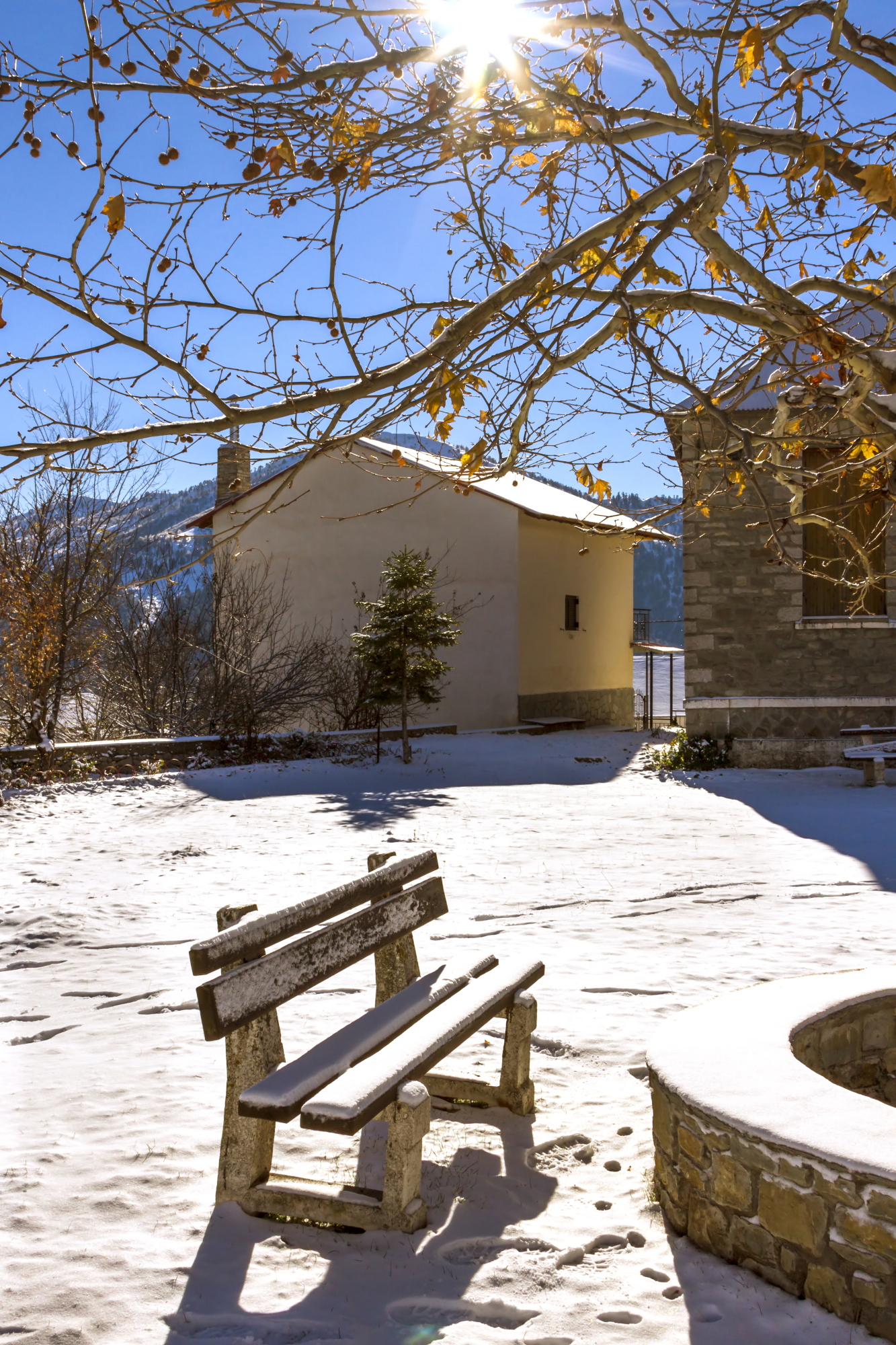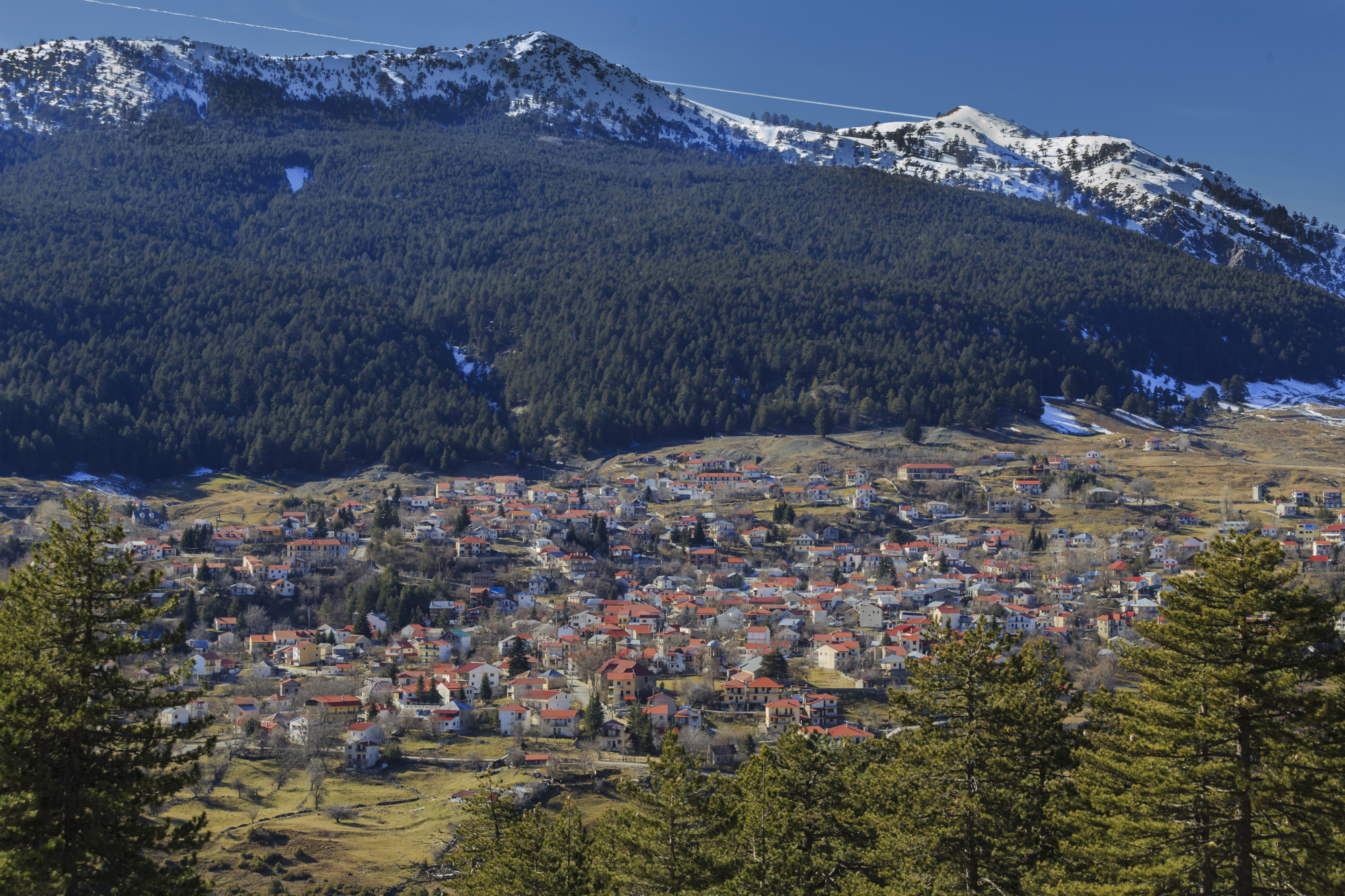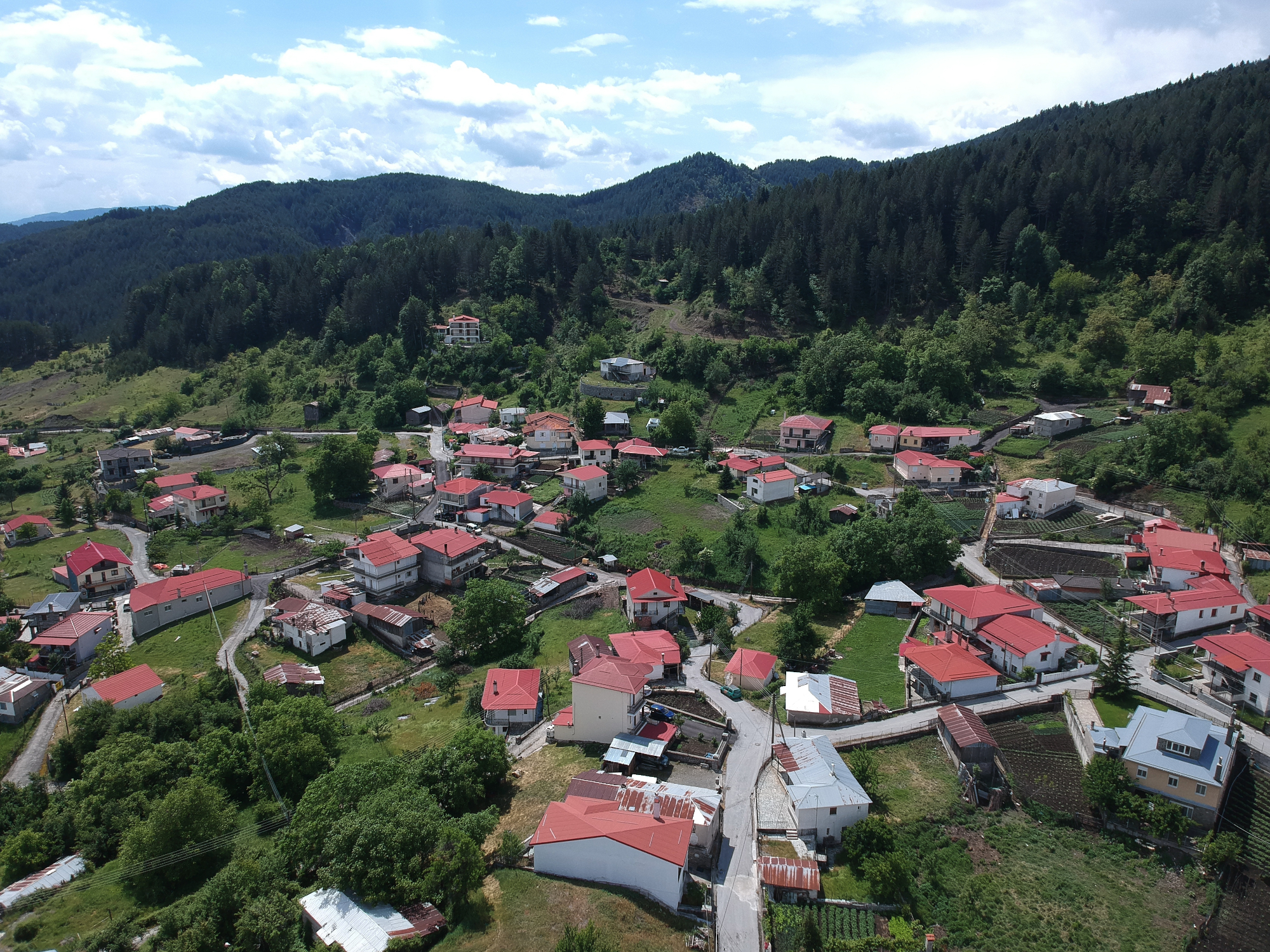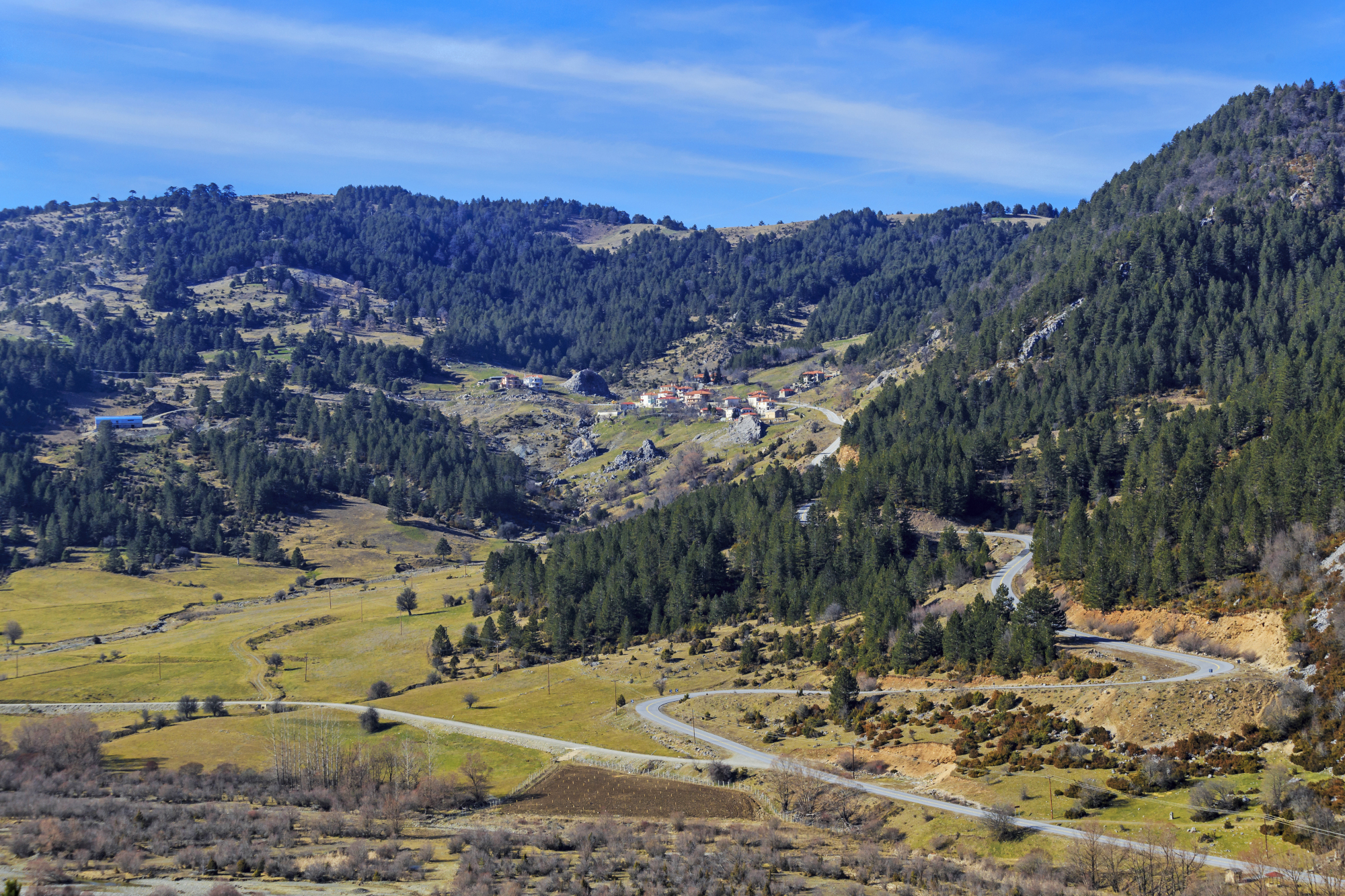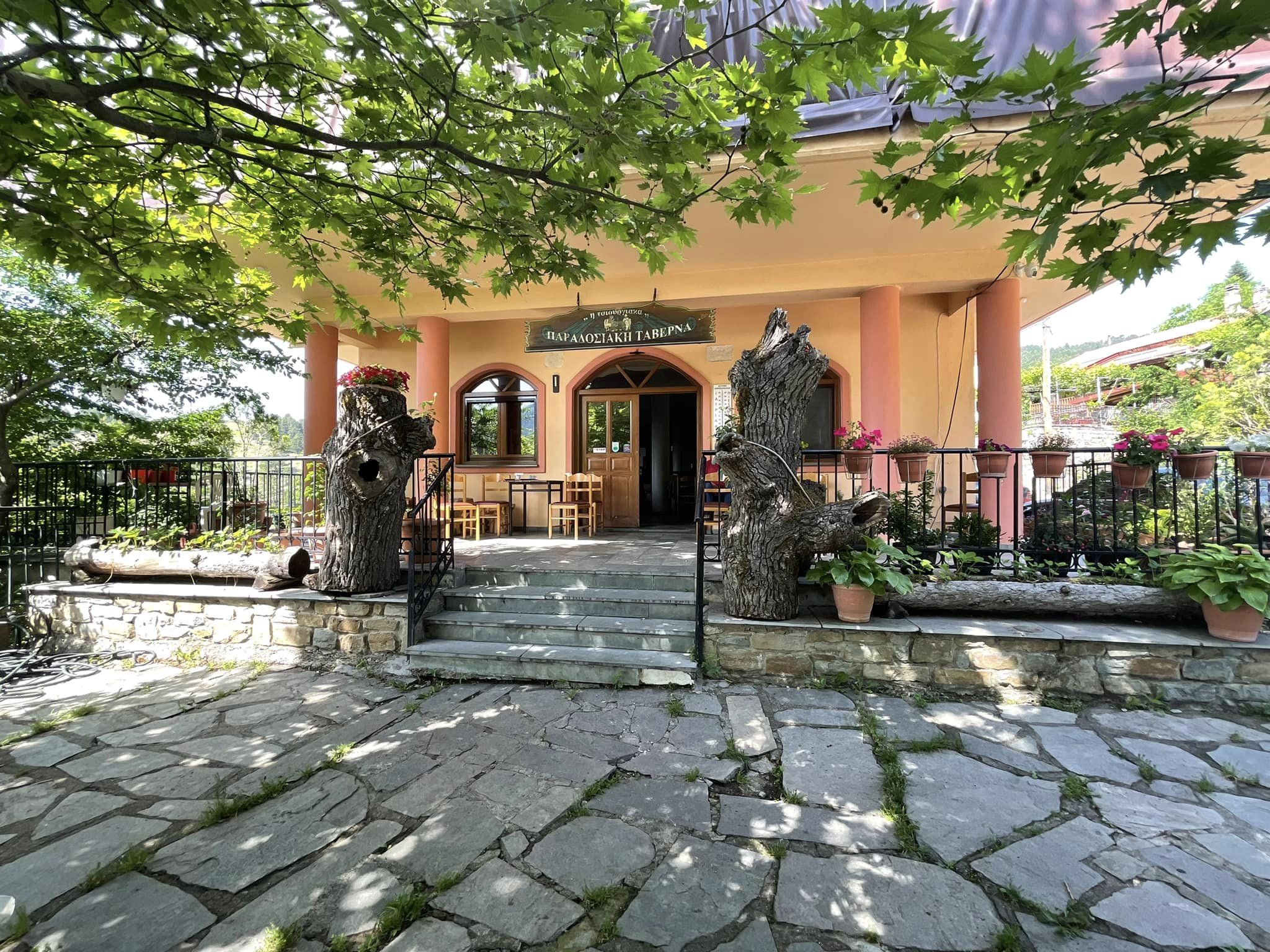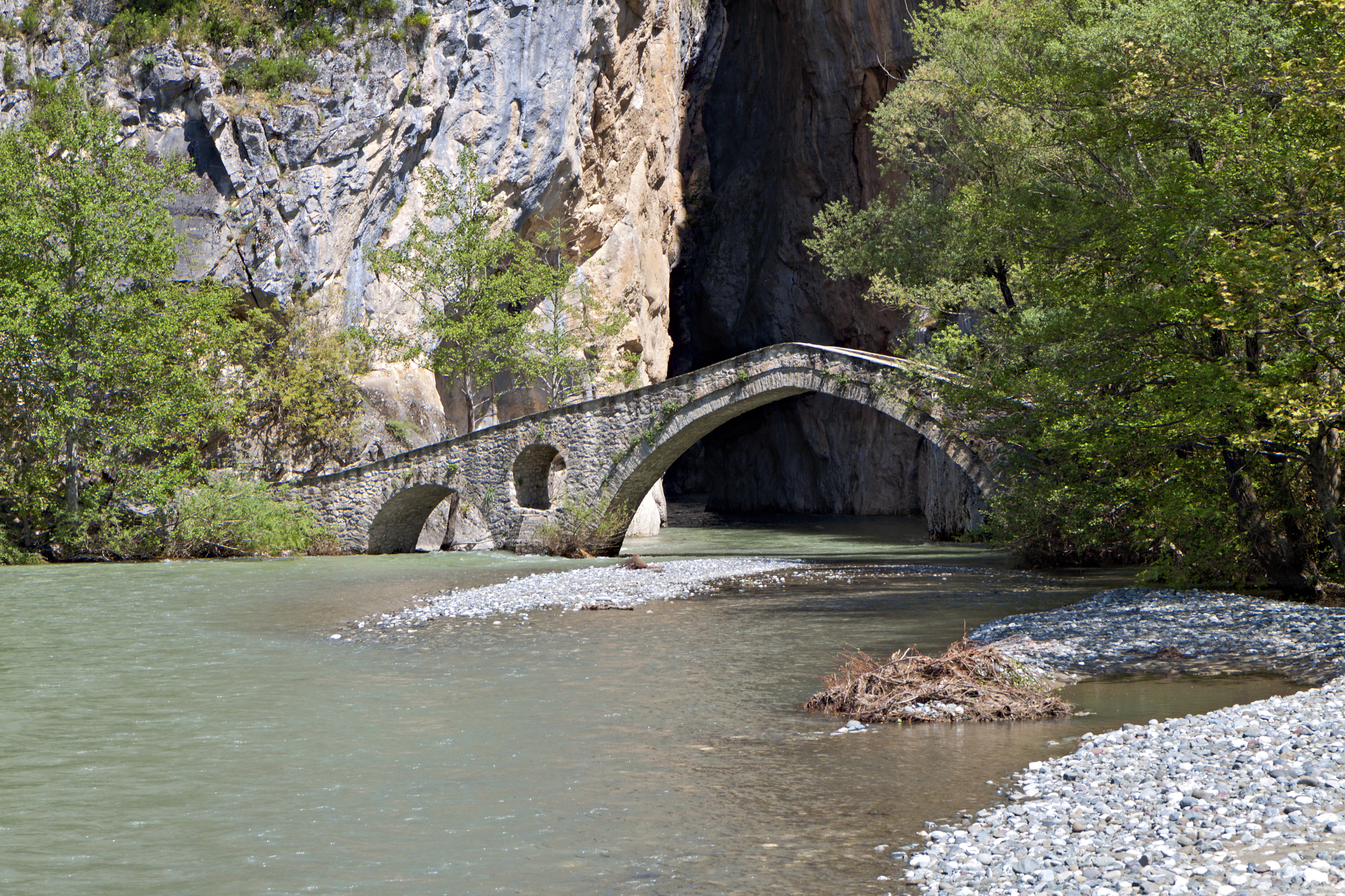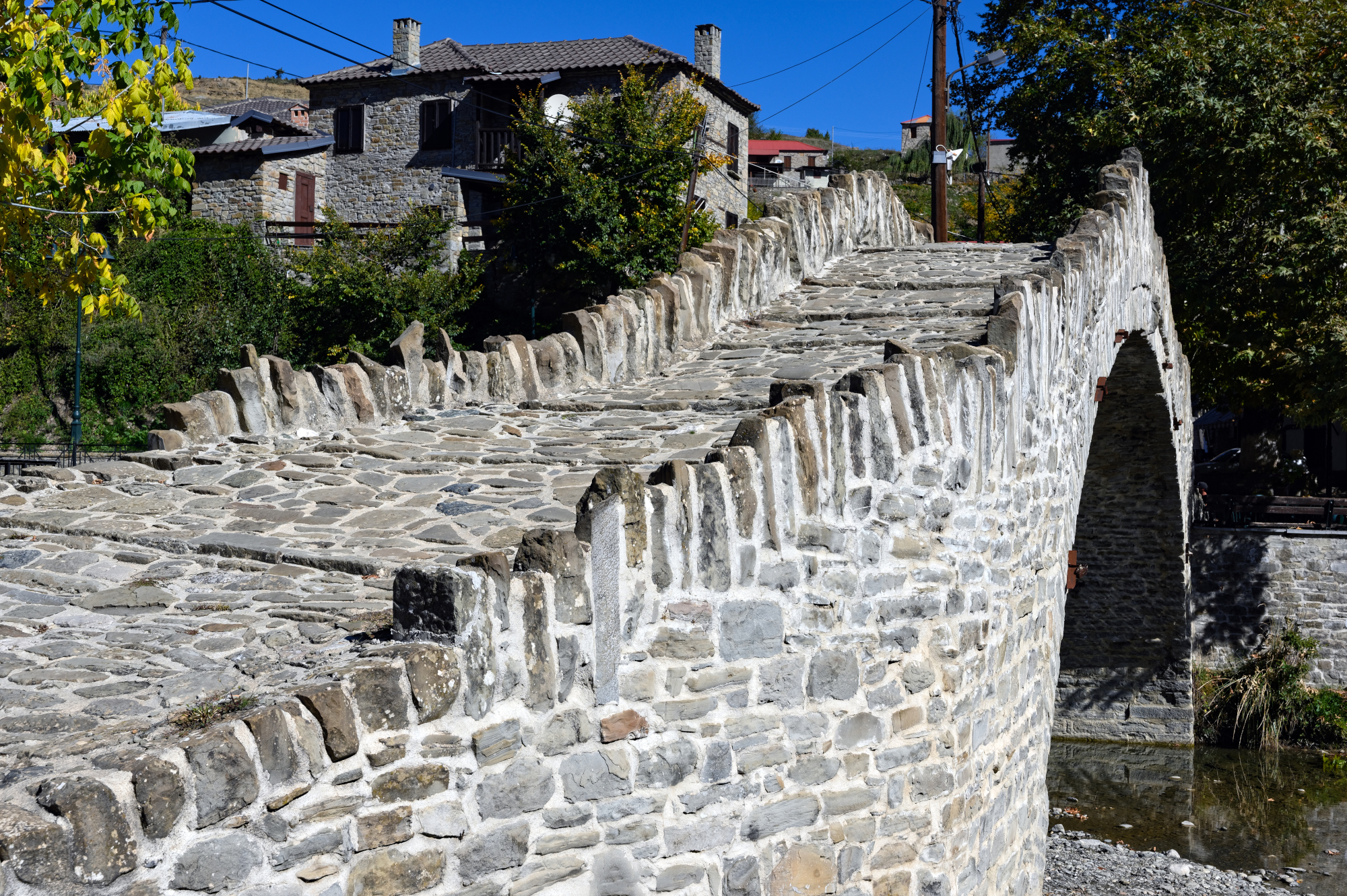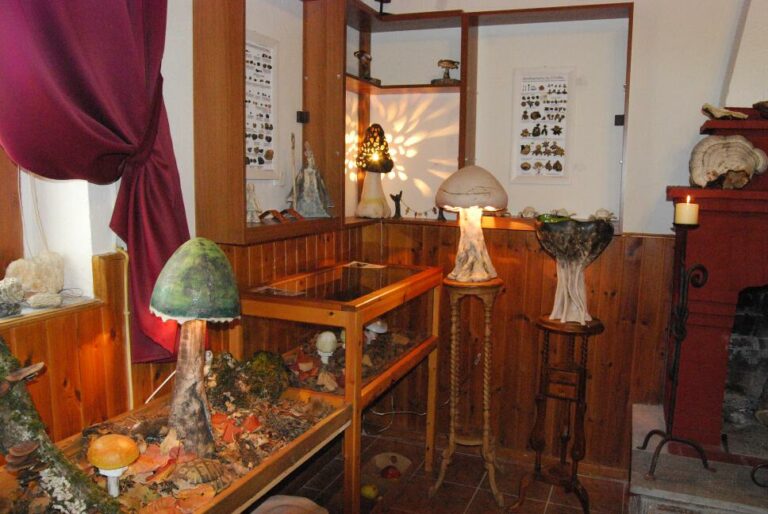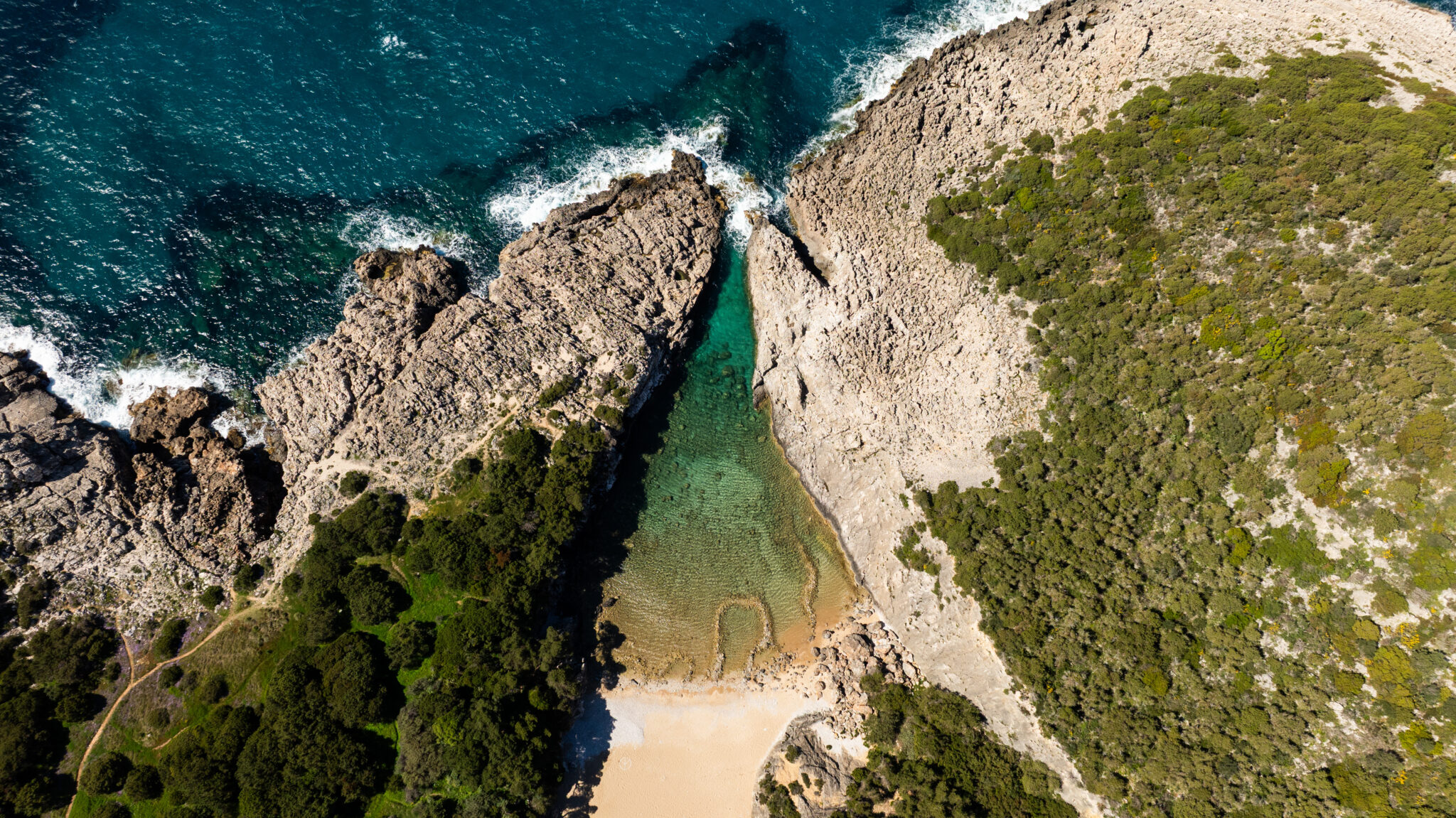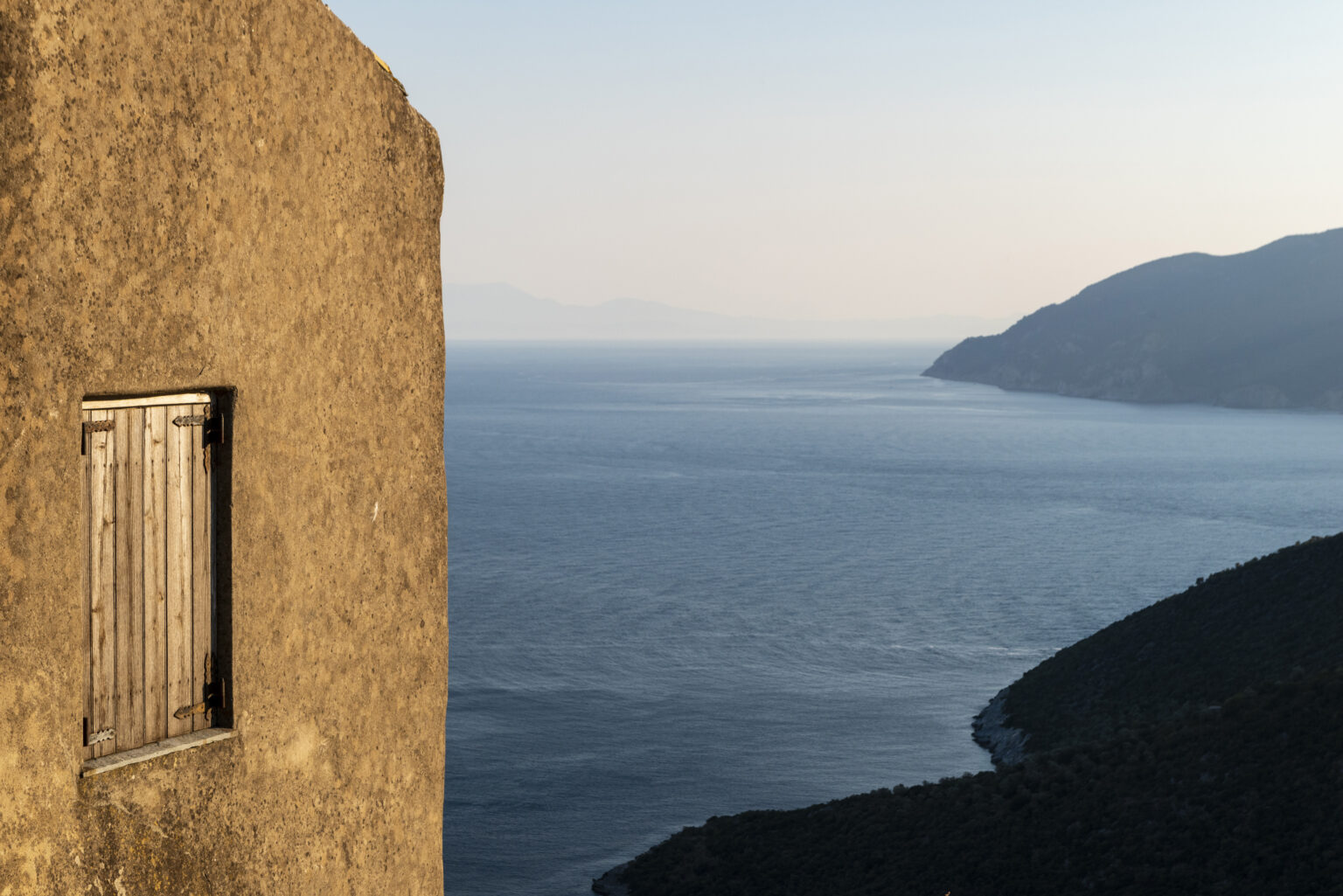In Grevena, northern Greece, it is always wintry during the New Year period. The snow-covered ski resort at Vasilitsa looks down towards the Valia Kalda mountain range. Winter interacts with the peaks of the region’s Lygkos, Chasia and Vourinos mountain ranges, as well as the elevated Flegga lakes at Mount Mavrovouni, 1,960 metres above sea level.
One of the most mountainous regions of Greece, Grevena hosts a big sectionof the Northern Pindos National Park, filled with gigantic oak forests, abundant running water, lakes and gorges. The Grevena region is also crossed by the Aliakmonas river, one of the country’s longest, as well as its tributaries, primarily Venetikos, all of which create locales of incredible beauty.
Within the national park, as well as throughout most of the Grevena region, structures stand like hand-made poetry. Rugged, traditional villages feature superb stone houses – the work of famed builders from Epirus – monasteries, watermills, ornate churches with impressive religious icons, as well as stone-paved uphill and downhill paths.
In the Grevena area, the Vlachohoria group of villages, whose locals, until recently, insisted on a semi-nomadic way of life, as well as Koupatsohoria, a lesser-known cluster, are both captivating.
Vlachohoria
Grevena’s renowned Vlachohoria village group is comprised of Perivoli, Avdella, Smixi, Krania and Samarina, the best-known of the five villages. They are all tucked away within dense forests with towering trees and scattered over the slopes of the Pindos mountain range, at an altitude exceeding 1,200 meters.
Up until several years ago, the Vlachohoria villages were virtually abandoned during winter. Their residents, almost entirely made up of livestock farmers and lumberjacks, would, with their animals, move down to lowland areas for milder winter weather, maintaining the area’s deep semi-nomadic tradition. Very few individuals remained at these villages during winter, guarding the properties of their fellow villagers.
The situation has now changed as a result of the dynamic rise of the Vasilitsa ski resort. Its expansions in recent times have prompted tourism industry development – lovely hotels, guest houses, restaurants, cafes and bars – drawing the tourism interest and involvement of locals. Some young people have chosen to live in the region’s villages, not for a share of the local tourism market, but to take on traditional jobs such as logging.
Samarina, on the eastern slopes of Mount Smolikas, at an altitude of 1,450 metres, is the most renowned and liveliest of the Vlachohoria villages. Samarina is engulfed by pine forests and features a large, stone-paved square that is surrounded by tavernas. Its stone houses, cobbled paths, two restored old natural washing basins, as well as Megali Panagia, the village church, with a towering pine tree rooted in its roof, are features.
Smixi, on the Vasilitsa slopes, at an altitude of 1,220 metres, and Krania, 900 metres above sea level, between Grevena and Metsovo, are both situated close to the Vasilitsa ski resort, and, as a result, have experienced major tourism-related development. Both village now have guest houses, hotels and tavernas. Built at an altitude of 1,300 metres, Avdella is situated within a forested area featuring beech, pine and fir trees. Interestingly, Avdella is the birthplace of Greece’s first-ever filmmakers, the Manaki brothers. Don’t be surprised by the corrugated iron roofs here. The amount of snowfall at the village is phenomenal. The square, the village highlight with gigantic plane trees and taps, serves as a starting point for exploring the Valia Kalda mountain range.
Perivoli, one of the oldest Vlach settlements of Pindos, is situated at an altitude of 1,280 metres, while 80 percent of its land is forested. The location’s general inaccessibility made the village a hideout, in the past, for thieves and sinners, as well as criminals in more recent times. If you reach Perivoli, seeing the Arkouderma river, a tributary of the Aoos river, is highly recommended. This stream flows with plenty of force.
Koupatsohoria
The Koupatsohoria group of villages, virtually unknown by their collective name, are made up of approximately 30 amazing villages. Locals at these villages engage themselves with farming, unlike the Vlachohoria, where the focus is on livestock farming and logging.
Tourism has become important for some of the Koupatsohoria villages as locals strive for a share of the wider region’s tourism market, without, however, compromising on authenticity. In addition, some younger people have settled here, envisaging new lives and professions. One such person, 23-year-old Kostis Batsilas, has established a livestock farm at the village Aetia with black pigs, calves and sheep, and also produces cheese varieties.
A low-profile village, Alatopetra is a lovely, well-kept and active village situated 1,270 metres above sea level. The surrounding forest hosts rare plant species. A watermill, just beyond the village, as well as the Venetikos river, running alongside the village and crossed by a lovely bridge, Gavos, are distinctive features. At the village entrance, a stone tap known as Siopotos is impressive. So, too, are the stone taps at Agios Panteleimonas, Agios Georgios and Agios Athanasios. On the way towards Aetia, the Tsourgiakas waterfall, whose waters plunge from a height of 35 metres at an incredible gorge, offers quite a spectacle.
Spilaio, one of the most beautiful and inaccessible (in winter) Grevena villages, is at the end of a winding route alongside granite rocks on the edge of a cliff. The village, at an altitude of 1,000 metres, on a slope at Mount Orliakas, leads to the lovely Portitsa bridge. The village, with stone-built structures, fully preserved traditional style, a stone-paved square, an old school, and, in general, a special atmosphere, is a historical location with particular natural beauty.
At the village entrance, the Koimisi Tis Theotokou church at the Panagia Spiliani monastery is from the 17th century. Its carved wooden door, gilded iconostasis, and rare murals are special features. To visit the church, you will need to locate the priest who holds the keys to its entrance. At the far end of the garden surrounding the monastery, the steep Karaouli rock offers a view revealing the wider landscape’s ruggedness and beauty. The mountain peaks seem to melt into each other. From this point, a dirt road leads to the Venetikos river. In addition, an old castle dominating the village peak dates back to Byzantine times. Many sections of the castle have remained fully preserved. Spilaio is also home to one of Grevena’s finest tavernas, Perdika (details below).
Dotsiko, the region’s most renowned village of craftsmen, is located at an altitude of 1,060 metres. Of all the Grevena villages, it is the only one featuring a stone bridge within the village, instead of at the entrance or exit, the customary location. This bridge is very impressive. The Dotsikioti river, a tributary of the Venetikos river, runs through Dotsiko, dividing the village into two districts. Both are endowed with picturesque stone houses, many of these now over one-hundred years old. The late Greek filmmaker Theo Angelopoulos, renowned for his poetic and atmospheric work, shot scenes for his “Alexander the Great” (1980) film at Dotsiko, using locals as extras. Dotsiko features a delightful stone-paved square with plane trees, the village centre, where shops set tables for coffee and food. The sound of running water from the river and surrounding taps is a permanent soundtrack here.
Villages with museums
Besides offering natural beauty, two villages, Lavdas and Milia, also host interesting museums.
Lavdas is home to the Mushroom Museum (+30 697 203 3243), housed at a traditional stone building. All of the region’s mushroom species are showcased in special display cabinets. Audiovisual material is also offered at the museum. Grevena is nowadays renowned for its mushrooms, the efforts of pioneer, researcher and collector Giorgos Konstantinidis, an author of many books on the subject, playing a key role.
Milia hosts a fascinating Natural History Museum (+30 24620 61271), showcasing paleontological discoveries from the surrounding region, including the tusks of a mastodon, a descendant of the mammoth species, 5 meters in length.
Accommodation
La Noi
A tastefully designed guest house in Samarina, La Noi serves very good breakfast. (+30 24620-965660, 6972862275, https://www.lanoi.gr/)
Casa La Mundi
This hotel, in Smixi, offers a tremendous view of Vasilitsa. It has suites with fireplaces and canopy beds. (+30 24620-25555-7)
Pindos Resort Luxury Suites
A superb small complex in Krania, it features six stone villas by the Valia Kalda mountain range. (+30 24620-86200, http://www.pindosresort.gr)
Valia Nostra Escape Hotel
A stylish guest house in Smixi, this spot combines traditional architecture with modern décor. Its features include a heated pool. (+30 24620-80151, https://www.valianostra.gr/)
Amadryades Boutique Hotel
Amadryades Boutique Hotel, fitted with stone and wood features, is a delightful place at an elevated location in Alatopetra. Its surrounds are well-kept. (+30 24620-25034)
Valia Calda Hotel
A stone-built hotel with minimal décor, Valia Calda Hotel, in Perivoli, offers a stunning view of the National Park, surrounding forest, and village. (+30 24620-82020, http://www.valiacalda.com/residence)
Food
Venetiko
Virtually within the forest, on the road headed towards the Vasilitsa ski resort, this eatery serves grilled meat, casserole dishes, and, for celebrations and weekends, rotisserie meat specialties.
Contact: Thodoros Ziakas, (+30 24620-85712)
Barbamihalis
In Samarina, Barbamihalis, at the village square, serves fine, traditional food, offering a variety of delights, including casserole recipes, pies, grilled and spit-roasted meat.
Contact: Sotiris Hotos, +30 24620-95231, +30 6976207717
Tsourgiaka
This eatery, in Aetia, relies on its own free-range livestock for casserole dishes, grilled and spit-roasted meat, sausages, as well as dairy products.
Contact: +30 24620-81220, +30 6932451104
Perdika
Situated at Spilaio, Perdika is renowned for its grilled meat choices, ewe, pan-fried meat, pies, trahana, mushrooms, as well as game, depending on the season.
Contact: +30 24620-82234
Read also:
Naoussa: One of the most interesting travel destinations in the attractive central Macedonia
7 rivers in Greece for reinvigorating swims
Mini waterfalls, arched bridges, wondrous greenery: Greece’s best rivers for rafting



